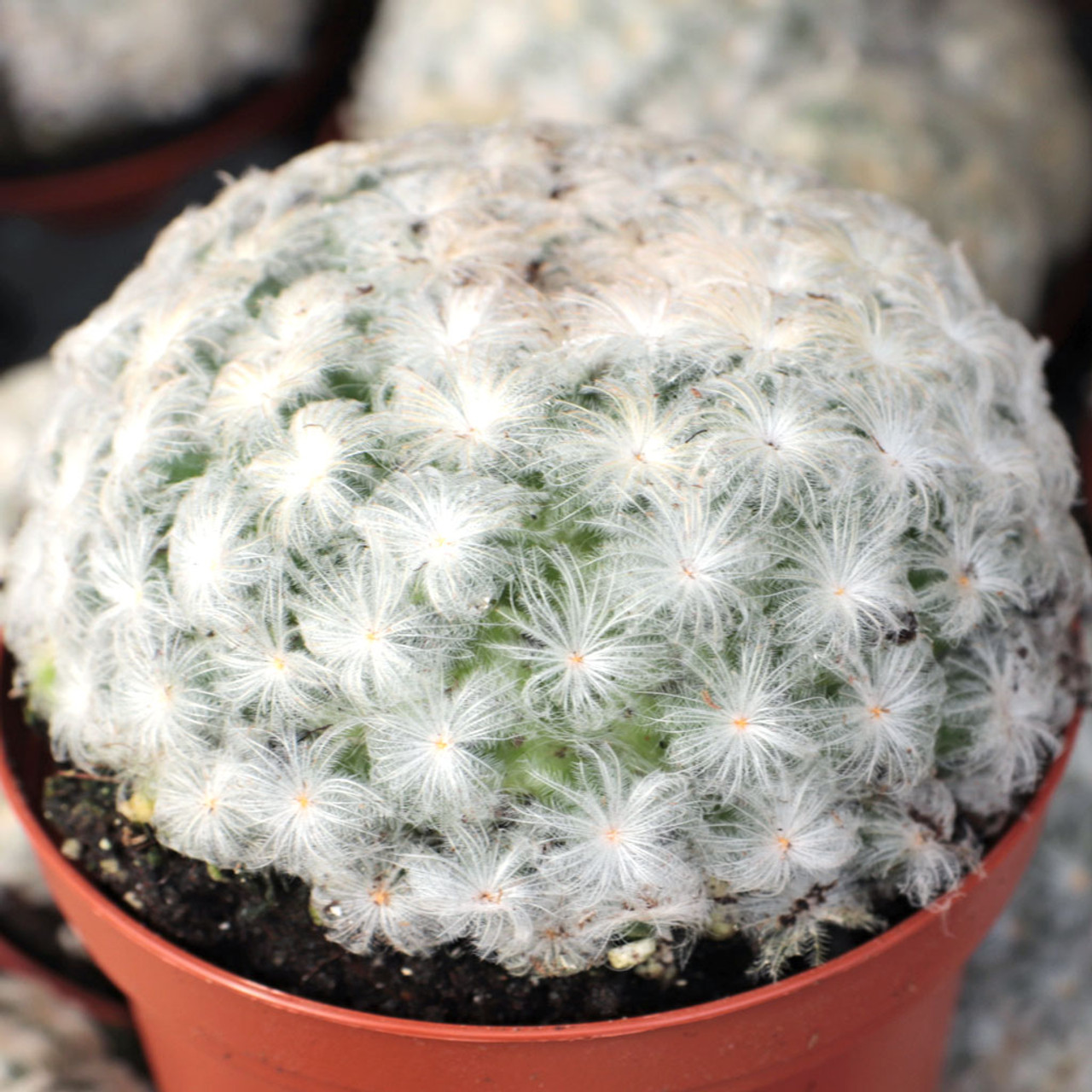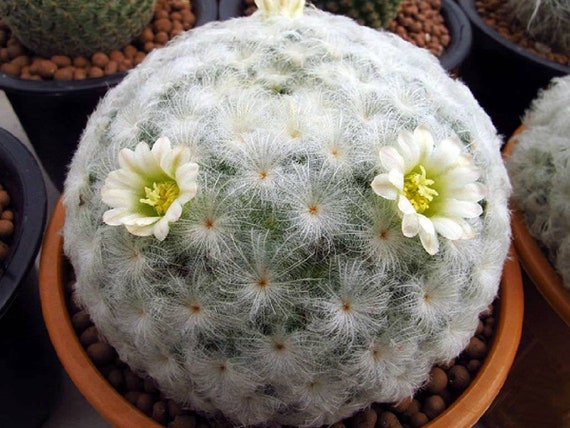The delicate exterior of Mammillaria plumosa, with its white “feathers,” may be deceiving; this cactus is covered in sharp spines. Not only do the “feathers” make the plant more visually appealing, they also provide a protective layer, shielding the cactus from the heat of the sun.
Table of Contents
Care and Propagation Information
The Feather Cactus is an ideal plant for container gardens, with its blooms ranging from white to yellow to pink. It is known to bloom in the springtime, though in some regions it may flower all year round.
The species is classified as being at risk of becoming endangered.
Watering
The most suitable watering practice for Mammillaria plumosa “Feather Cactus” is the “soak and dry” technique. You should allow the soil to dry out completely before giving it another soak.
Where to Plant
If you live in a climate with temperatures that dip below 20° F (-6.7° C), it is recommended that you plant the Mammillaria plumosa “Feather Cactus” in a pot so that it can easily be brought inside when the temperature drops. This succulent thrives in both full and partial sun.
How to Propagate Mammillaria plumosa “Feather Cactus”
The Mammillaria plumosa “Feather Cactus” can be propagated in a variety of ways. Taking cuttings or offsets is the simplest approach, but it is also possible to collect the seeds from its fruit.
Cuttings
To propagate Mammillaria plumosa from cuttings, take a sterile, sharp knife or scissors and snip off a stem from the parent plant. Allow the stem to dry and form a callous at the end before placing on well-draining soil. Make sure to water the soil only when it has completely dried out.
Offsets
Mammillaria plumosa will generate small offshoots around the base of the plant which can be removed and replanted. Cut the offsets from the stem, then let them sit for about 1-2 days to dry before planting them in soil that drains well.
Seeds
To harvest the seeds of Mammillaria plumosa, let the fruit over-ripen, then remove the seeds. Clean them thoroughly and give them time to dry before they are planted in a properly draining soil. A bit of effort is required.
Care and Propagation Information
General Care for Mammillaria plumosa “Feather Cactus”
The species is classified as being at risk of becoming endangered.
Watering
The most suitable watering practice for Mammillaria plumosa “Feather Cactus” is the “soak and dry” technique. You should allow the soil to dry out completely before giving it another soak.
Where to Plant
If you live in a climate with temperatures that dip below 20° F (-6.7° C), it is recommended that you plant the Mammillaria plumosa “Feather Cactus” in a pot so that it can easily be brought inside when the temperature drops. This succulent thrives in both full and partial sun.
How to Propagate Mammillaria plumosa “Feather Cactus”
The Mammillaria plumosa “Feather Cactus” can be propagated in a variety of ways. Taking cuttings or offsets is the simplest approach, but it is also possible to collect the seeds from its fruit.
Cuttings
To propagate Mammillaria plumosa from cuttings, take a sterile, sharp knife or scissors and snip off a stem from the parent plant. Allow the stem to dry and form a callous at the end before placing on well-draining soil. Make sure to water the soil only when it has completely dried out.
Offsets
Mammillaria plumosa will generate small offshoots around the base of the plant which can be removed and replanted. Cut the offsets from the stem, then let them sit for about 1-2 days to dry before planting them in soil that drains well.
Seeds
To harvest the seeds of Mammillaria plumosa, let the fruit over-ripen, then remove the seeds. Clean them thoroughly and give them time to dry before they are planted in a properly draining soil. A bit of effort is required.
FAQ
How big does a feather cactus get?
The object is three to four inches in height.
Is Mammillaria plumosa rare?
Mammillaria plumosa, or Feather Cactus, is an uncommon cactus native to Nuevo Leon, Mexico. Its name derives from its distinctive, soft look, making it stand out among other cacti.
How do you take care of a feather cactus?
This plant needs regular watering in the summer. To maintain its best appearance, it is best to keep water off of the spines. Fertilize it once or twice a year with a complete fertilizer, or monthly with a weak solution to keep it healthy. The soil should be a fast-draining cacti and succulent soil mix.
How do you take care of an indoor cactus plant?
It is recommended to give cacti and succulents plenty of light, and the ideal spot to place them is in a bright, south-facing area. Make sure not to overexpose them to direct sunlight, as this can be too intense and cause the plants to turn yellow.
How much sun does a Mammillaria cactus need?
These cacti require direct sunlight for a minimum of five hours per day. Placing it near a south-facing window indoors is ideal, while outdoors the spot should be sunny but with light shade to shield it from the hottest part of the day.



